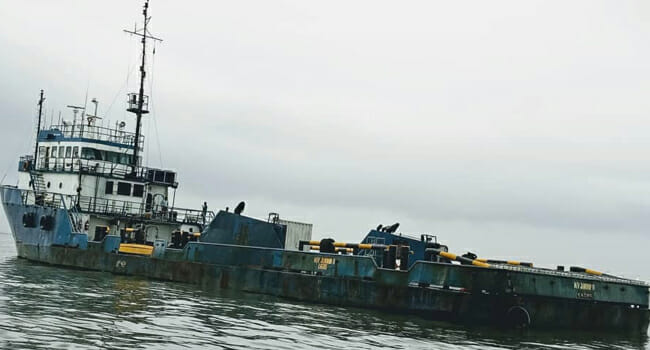The Nigerian Ports Authority (NPA) has revealed why oil thieves have been elusive and are able to perpetrate the crime without being caught.
The agency said, to avoid being detected, oil thieves usually turn off the automatic identification system (AIS) of vessels to avoid detection.
The AIS is an automatic tracking system that uses transceivers on ships and is used by vessel traffic services.
Mohammed Bello-Koko, managing director, NPA, said it is common for persons conducting illegal activities on Nigerian waterways to turn off the AIS.
The NPA MD spoke on Tuesday at a press briefing at the state house in Abuja.
Speaking on the vessel recently arrested with stolen crude close to the Escravos channel, he said: “The intelligent persons bringing in vessels to steal crude, one of the things they do is, they shut down the automatic identification systems (AIS).
“This is what is needed in terms of transmission for you to even know when the vessel comes in and the location they to go to.
“They come in legally but then they go by the left-hand side to commit illegal activities after switching off their AIS. We are going ahead to deploy the vessel traffic service (VTS) and to also have information in terms of vessel movement.”
Speaking further, Bello-Koko expressed worry about the theft of buoys on shipping routes.
“Each of the buoys which serve as navigational route signs costs between N12 million and N20 million, whereas no fewer than 25 of these maritime safety equipment have been stolen from Nigerians waters this year alone,” he said.
“Apart from the cost of the buoys, it is even costly to install and deploy them on waters.’’
Bello-Koko explained that the absence of the buoys puts ships at risk of running aground.
He said as a result of the anxiety, many foreign ships’ captains choose to avoid certain areas of Nigerian waterways.
To checkmate the activities of the vandals, the NPA boss said the management had been interacting with the locals and their leaders in communities where the theft occurs.
Bello-Koko said the stolen buoys are often turned to scrap, with the perpetrators vandalising the sensors.
“And to also be fair to the communities, we have had some instances where the buoys were naturally taken away by nature, they went adrift, they ended up on the shores of some communities,” he said.
The NPA boss added that some communities have “called us a couple of times to tell us that there is a buoy that has gone adrift”.
“We believe probably the communities do not even know the individuals that are involved in these activities. So we are monitoring the buoys. And that is how we got to know how many are stolen any day it is stolen,” he said.
“Because the captains are also taking vessels in and out of the water channels, they will naturally know when they can’t find the beacons on the buoys meaning that something is missing, and they normally report it.”
